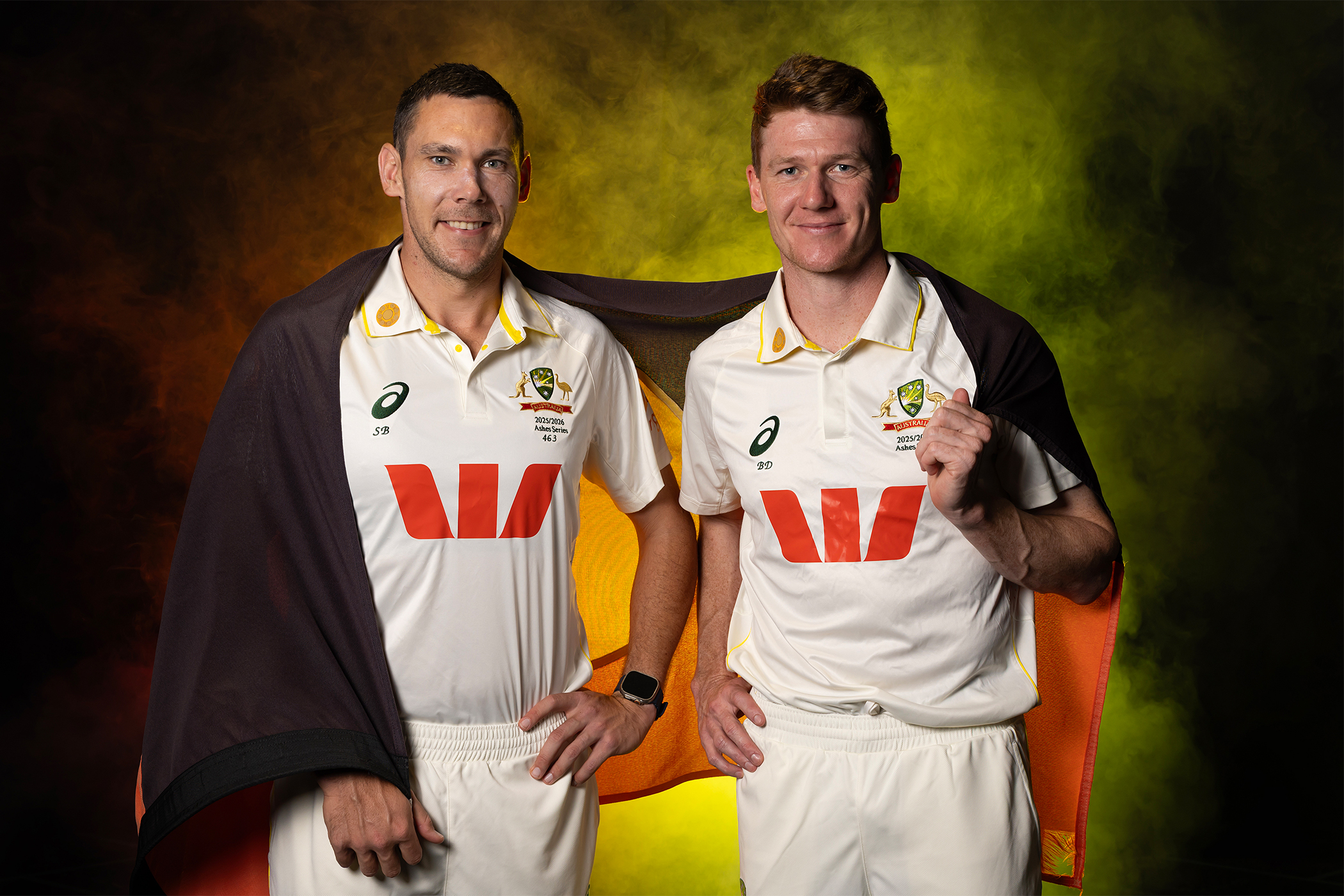Membership of the Australian cricket team is a little like the cast of a long-running soap opera – a Neighbours, or a Home and Away, in which characters appear, achieve familiarity, behave to type, start to pall, then fade away. Like a lot of Aussie soaps, too, it has tended to stereotypes and stock characters, to a preponderance of Shanes and Mitches with a suburban burnish. Captain Steve Smith, a cricketer as Australian as the Weet-Bix he used to flog, seems to incarnate this, while his vice-captain Travis Head might almost have been dreamed up by musical comedian Kevin Bloody Wilson.
Don’t look now, however, but it’s worth noting the soap’s new direction. Australia will issue two new caps on Friday morning for the first time since the Gabba Test in January 2019, while Smith’s squad contains no fewer than four players born overseas: Usman Khawaja of Rawalpindi, Marnus Labuschagne from Klerksdorp, Michael Neser from Pretoria, and Josh Inglis from Leeds. Maybe The West Australian should tone down those gags about “New Zealand-born Ben Stokes”.
The squad also includes the first Australian player born and bred in the Northern Territory, Jake Weatherald. Most importantly, perhaps, it features, for the first time in our history, two players of indigenous descent, Scott Boland, with his Gulidjan grandfather, and Brendan Doggett, with his Worimi ancestry.
Is that something? It’s not nothing. It certainly belies a great many dated but durable assumptions about the game in this country. One of Indian cricket’s proudest boasts in the last decade has been its demographic spread – the Indian cricketer from the “small town” is a modern phenomenon (even if many of these towns on inspection prove to be hugely populous). Anyway, Australian cricket may be undergoing a similar shift, at least in better reflecting its immigrant nation status and First Nations heritage.
Cricket hereabouts has never, in my opinion, made enough of being a naturally diverse game. It welcomes all heights and body types. It finds a place for all dispositions and ages – I haven’t had a more exciting moment this season than the direct hit run out executed on Saturday by my 78-year-old Yarras team-mate Scuzza. And Australian women’s cricket, it need hardly be added, is decades ahead of the distaff football codes.
Cricket is inevitably ever more streamlined and corporate – everything is. But the game still presents openings to those from outside its “system” – in the case of Alex Carey, Australian rules football’s loss was cricket’s gain. The aforementioned Doggett is another exemplar – he played no elite under-age cricket and was simply spotted bossing it in Toowoomba club cricket in his early 20s. By the way, he will also be Australia’s first cricketer cum tradie (he was a carpenter) since Xavier Doherty; Fergus O’Neill, once a landscape gardener, was unlucky to miss out.
A function of Australian cricketers seeming to mature later, moreover, is that they often have more of a tale to tell. The 31-year-old Weatherald has set a fine example of candour in discussing his mental health battles – his captain, it seems, at last has a rival in the obsessive compulsive disorder stakes. Nathan Lyon from the nation’s cherry capital of Young, meanwhile, could hardly be more evocative of regional Australia were he to arrive by tractor chewing a stalk of wheat.
The other shoe waiting to drop, of course, is south Asian – almost 7% of Australians at the last census identified this as their heritage. Gurinder Sandhu, Jason Sangha and Tanveer Sangha have provided a foretaste of the pent-up cricket talent; if you’re Victorian, you’ve been following Ashley Chandrasinghe. On the you-can’t-be-what-you-can’t-see principle, Cricket Australia pines for an Australian XI featuring names as non-Mitch-and-Shane-like as Nivethan Radhakrishnan, Nikhil Chaudhary, Harjas Singh and Harkirat Bajwa.
Until then, console yourself that cricket has a claim to being always a little more diverse than painted. The Australian team in the inaugural Test match, after all, contained five players born overseas, including the first Test cricketers born in India and Ireland. Australia’s skipper, moreover, has dual citizenship – it was his Hackney-born English mother, daughter of a pilot in the RAF, who introduced him to cricket. What a great soap opera plot that would make.
Photograph by Paul Kane/Getty Images

